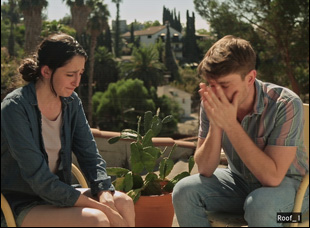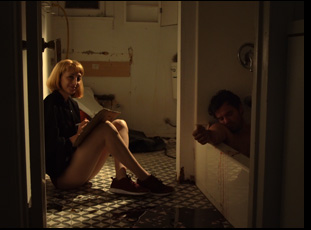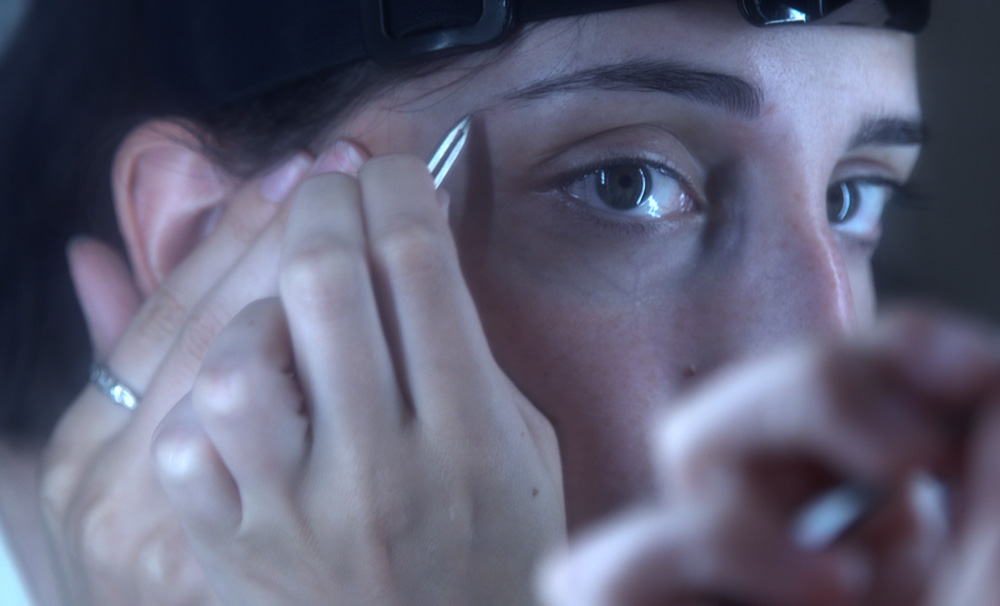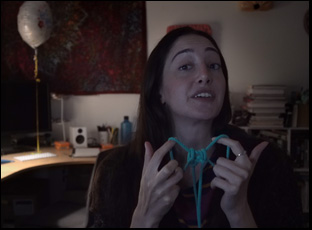It would’ve been reasonable for Gillian Wallace Horvat to be offended at the suggestion that she might make a good murderer, but leave it to the gifted storyteller to have a more interesting reaction.
“I certainly took it as a compliment. I think being told you’re good at anything is a compliment, and you should say thank you,” recalls Horvat of the kind of conversation that only happens after a few drinks between friends. “We talked about that and the characteristics that you need to be a good murderer, like having a vision that you see through from start to finish, being resourceful, being able to improvise when obstacles come up and most importantly, being impervious to doubt and criticism and rejection, being able to handle those things and see those projects through to the end without any remorse. Those are qualities that film directors also have, so seeing the connection between the two, it obviously gave me a lot to think about.”
Now it’s audiences’ turn with “I Blame Society,” Horvat’s savvy interrogation of how systemic oppression leads one aspiring filmmaker (Horvat) to turn her creative instincts from plotting out films to masterminding murders. After having shown off a wicked wit and a strong sense of style on the outrageous dark comic shorts “Kiss Kiss Fingerbang” and “Whiskey Fist,” the writer/director and now actress slyly employs the found-footage aesthetic to show how the denial of opportunities to make a film ushers Horvat’s onscreen alter ego Julia to begin having one play out in her head, hardly suspected of any responsibility for the mounting body count when she’s unseen in her professional endeavors as the film grows more cinematic as she becomes more detached from reality.
Both a passionate protest and a skilled demonstration of what any industry gatekeepers have been missing in failing to back Horvat, “I Blame Society” can be upsetting as much as it can be enjoyed, hitting all the right notes for a vicious satire and shortly before the film arrives on VOD this week after a robust festival run this past year even in the midst of a pandemic, the filmmaker spoke about the unusual path this took from documentary to fiction, being thrust front and center in a way she hadn’t been before in taking on the film’s central part, and the unexpected opportunity to catch the film at a drive-in.
First, I did this short documentary called “I, Murderer,” and it involved me interviewing friends and family and I would take each of them to a different murder locale, like the middle of a forest or down to the docks. I interviewed my ex-boyfriend in an empty parking lot and I was in the backseat of the car and we’d talk about whether I’d make a good murderer or not and those connections to filmmaking. I didn’t end up finishing the short because I thought it was cute, but I didn’t think it was anything meaningful.
Flash forward a few years later and I was talking with my manager and producers about the project. We thought we could actually take that footage and then make it into this very arty found footage movie where what seems to be a documentary ends up with the main character just going from somebody who’s hypothetically planning how to commit a murder goes to actually killing people because of how she feels so frustrated in her personal and professional life. It was something we could do relatively inexpensively and it would remove a lot of that first-time feature filmmaker stigma that was preventing us from getting other projects financed.

Yeah, I certainly never thought that my first feature would be a found footage movie, but that had to be the case for the story to make sense and make it feel more immediate, compelling and authentic. The found footage format comes with a lot of restrictions and sometimes people cheat and I think that makes their movies suck. When somebody like pulls you in with the found footage hook and then they use a [camera] angle that nobody could’ve gotten or there’s no character there, it’s a total plot hole there, then I don’t know why they’re subjecting somebody to the pitfalls of the found footage format – the jumpcuts and the shaky camera and all that stuff. There’s got to be a payoff and the payoff is the feeling of authenticity and verisimilitude. If they break that illusion, they’re fucking idiots, so I would rather hamper myself in some way and stay true to the found footage aesthetic because it’s the bigger payoff [of] feeling more disturbing and more uncomfortable because it looks like something somebody shot themselves.
Was it an easy decision to embrace the short when it laid out the style and the fact you had to be front and center?
I definitely found it daunting to be acting on camera and to be in every shot and directing the movie. You definitely feel like you’re doing everything with one hand tied behind your back and your mind is in a million different places and you have to be in different emotional spaces. As an actor, you have to be really vulnerable and open. As a director, you have to be so hardened that a bomb could go off and it doesn’t shake you and you just keep going, so it’s a kind of schizophrenic mindset to be in, but I only had to do it for 12-and-a-half days, so I just nutted up and did it.

I’m sure shooting in sequence always helps actors see where the character’s going and they allow themselves to feel like they’re going on that journey too. I definitely felt like I was mentally disintegrating by the second week like Julia, for sure. The first scene we shot is the opening scene of the film and some unexpected things happened in that scene where we were shooting it. We did a bunch of takes and my scene partner Chase, who is also my co-writer, and I were improvising and Chase is a really, really fantastic actor. He made me feel so guilty during that scene as a character, guilty of the ridiculous and hardhearted thing my character did that you could see onscreen my ears start to turn red. That’s because I was humiliated and really flustered and I felt so bad that I started crying, and I wasn’t supposed to cry during the scene, but I felt awful. I just let it happen and we kept that take because we thought it was really funny.
It’s such a great scene in the movie. Was it interesting how to figure out how to film when you’re at the center of it?
My DP Olivia Kuan and I figured that out well beforehand. There was a really detailed shotlist and we knew exactly when we were introducing cameras and when we weren’t, but at least in the very beginning, we were trying to make it as easy as possible because this character is a director, but she’s not a cinematographer, so she’s inexperienced when it comes to using the camera and lighting. So we could keep things very simple at the beginning. We’d lock down the camera and [have] just one lighting set-up and we’d just roll things. We worked really, really fast. Then the second week after my character has her breakdown and she disassociates in a way where she wants to make her life more like a movie, we introduced more cameras and more complicated lighting set-ups and camera movement. That’s where things did become complicated, but Olivia is fantastic. She’s really, really resourceful and not only that, she’s the fastest DP anybody’s ever seen – she’s good and fast, so I don’t think we were ever waiting on camera prep. It wasn’t stressful that way and that’s thanks to her.

We’ve gotten the full range of audience experiences. We premiered the film in Rotterdam right before everything shut down, so we actually did get a wonderful in-person audience interaction there multiple times, but shortly after that, everything went virtual, so that’s had its ups and downs. I felt really sad to miss out on all the traveling, but when I saw Indie Memphis was doing these drive-in screenings, I was like, “Oh man, I’d love to see my movie at a drive-in. When am I ever going to have the chance to see my film at a drive-in?” And then Miriam told me they were programming it on a double bill with “Crash.” And that’s when I said to myself, there’s no way I’m missing out on this. I’m going to be safe, but I’m going to fucking go there and I did.
It was so awesome. I went to the Bass Pyramid, which is the coolest thing in the world and it still felt like watching the film with an audience even though everyone was in their cars at the drive-in. And then you know how at film festivals there are walkouts during your screening, when some people are like, “Fuck this”? There were no drive-outs. Nobody turned their car on and drove away from my movie, so that felt great too.
“I Blame Society” will be available on VOD on February 12th.





